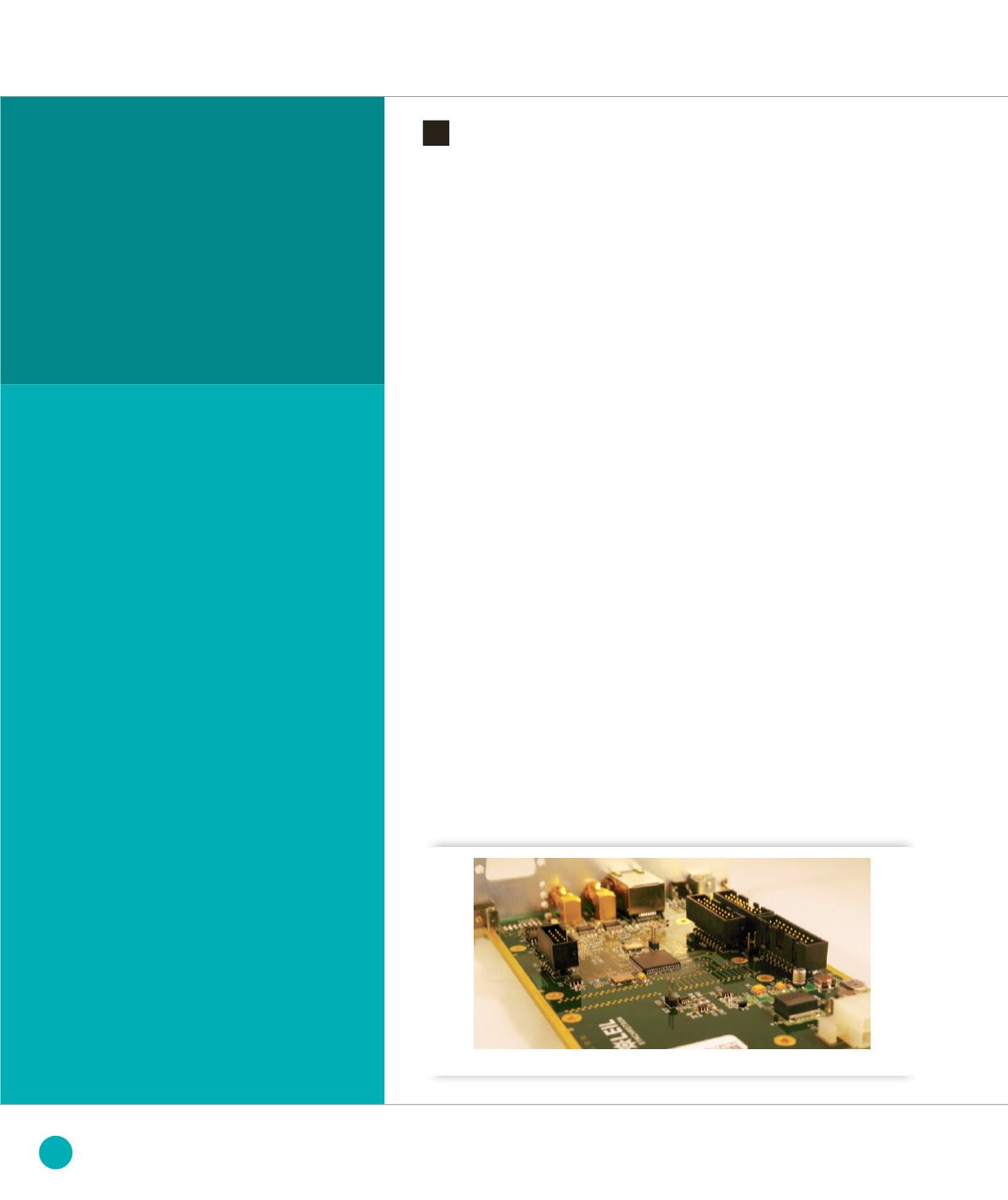
SPI Boards Package
a flexible multipurpose
set of boards
for various scientific
applications
The machine and beamlines continually
improve their performance: to be able
to perform fast and complex experimental
data acquisition we need to control
accurately the beam parameters and
to synchronize the data with the sample
position or angle in order to focus only
on useful data. The SPI Boards Package
is a set of electronic boards developed
in order to provide a simple and modular
solution for the applications requiring such
synchronization or embedded control tasks.
Since 2008, when the accelerators and
beamlines received users, operational
feedback has allowed us to identify some
ways of responding to requests for rapid
and synchronous data acquisition. This
challenge has been met in two specific
scientific domains:
n
The first domain is the synchronization
of multiple-commands to electromagne-
tic insertion devices in the storage
ring, as a function of the settings
of the machine and in order to improve
beam stability.
• The second domain is the synchroniza-
tion of detectors with motorized devices
like sample stage or goniometer in order
to acquire and accurately characterize
the pertinent data.
The SPI BOARDS PACKAGE (SPIBP) is a
set of electronic boards allowing to embed
process-specific and synchronization
functions at low level. It gives us a modular
platform to develop solutions with simple,
reliable and durable tools. In the SPIBP
architecture, the boards can be connected
together in a daisy chain, and communicate
with a controller via a Serial Peripheral
Interface (SPI) Bus. Communication with
the SOLEIL software control and data
acquisition system is performed via
Ethernet. Each board can be connected
with others as needed. The SPIBP enables
us to deliver solutions for applications with
either analog interface or position encoders.
We can control or command directly power
supplies that drive electro-magnets
or process any position encoder signal
in order to correlate data on photon
energy or sample position.
In the first domain, a typical application
is to improve the beam stability by
embedding feedforward control for
electromagnetic insertion devices inside
a SPI platform. For instance,
the ElectroMagnetic/Permanent magnets
Helical Undulator (EMPHU) is made
of steel poles surrounded by coils and
permanent magnets fixed on two girders
which are attached to a motorized
carriage. In this configuration, the vertical
field is generated by means of main
coils powered by a DC current, and the
horizontal magnetic field by permanent
magnets. The vertical movement of the
girders then changes the peak field values.
In addition to the power supply of the
main coils, 8 sets of coils locally correct
the magnetic field. For the feedfoward
correction, lookup tables are defined
to predict the value of all power supplies
as function of the girder position and the
current in the main coils. The changes of
the polarization and parameterization with
tables downloaded inside the SPI platform
are requested from the supervision. In
operation the SPI platform reads directly
the girder position thanks to a position
encoder input and generates analog
signals synchronously to drive the 9 power
supplies of EMPHU. The SPI platform
manages both the fast switching of the
EMPHU and the beam correction. This
undulator is the second source for the
DEIMOS beamline, dedicated to the study
of magnetic and electronic properties
using polarized light. During dichroism
experiments the sample is scanned
alternatively in right and left polarization.
EMPHU fast polarization switching rate is
MODELING, METHODOLOGY AND INSTRUMENTATION
➊
The SPIController, a board of the SPIBP.
114
SOLEIL
HIGHLIGHTS
2013


